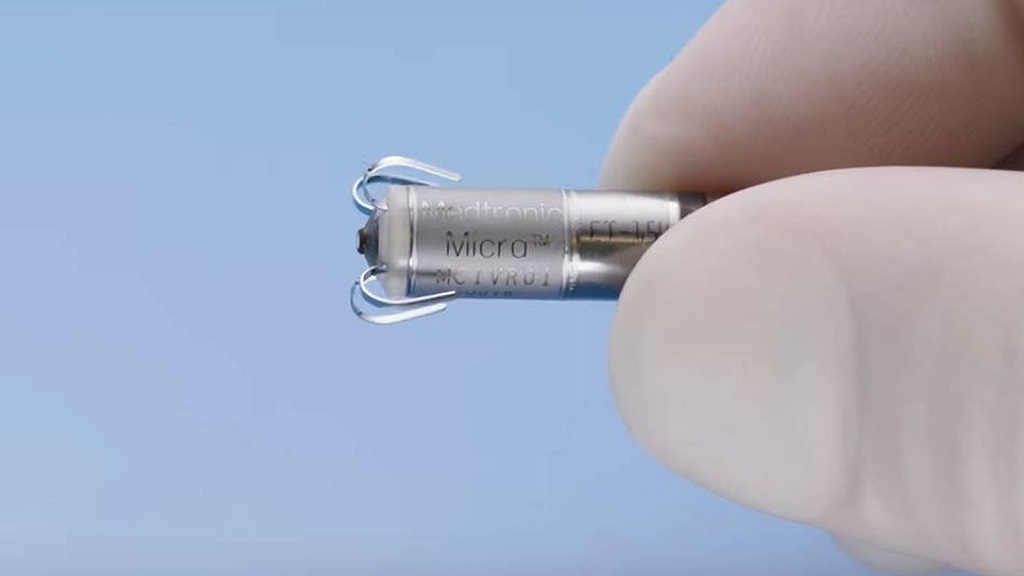
The wireless pacemaker, which in its day represented a great advance in the field of Cardiology as a treatment to avoid the consequences of arrhythmias, is becoming an advanced option, increasingly demanded by cardiologists for patients who need one. Compared to the conventional device, which carries cables, the wireless one presents fewer complications and improves the patient’s experience when wearing it.
The Hospital Sanitas CIMA, in Barcelona, is refining the technique and implanting pacemakers without leads thanks to the work and experience of the team of doctors John Paul Canepahead of the cardiology service, and Ignasi Anguera, head of the Arrhythmia Unit. The result is a lower number of complications in the interventions carried out, mainly infections, and a positive perception of the patient, who hardly relies on the fact that he has a miniaturized device implanted and without any cable.
“The leadless pacemaker is especially indicated for slow arrhythmias, also known as bradycardias”, explains Dr. Canepa. “As its name suggests, the pacemaker is a stimulation system that sets the pace for the heart. Until now, it had been implemented through an invasive procedure with an incision below the patient’s clavicle to access his venous system through a puncture, thus reaching the subclavian vein and from there directly to the heart. The operation was done with cables and was not exempt from complications and iatrogenic risks”.
Leadless pacemaker implantation is only possible when you have extensive experience in conventional pacemakers, like the one treasured by Dr. Anguera: “It is a more complex device, which is implanted by a sheath system, through which the heart is accessed. The management of these catheters requires significant technical skill. In addition, the company that manufactures the device requires that the doctor has been accredited with a previous volume of operations, and has passed tests and certifications, to ensure the success of the intervention”.
However, in recent years, with the advancement of medicine that is allowing a constant development of minimally invasive procedures, the wireless pacemaker, as one of its most illustrious examples, is gaining ground and is being applied in an increasing number of hospitals, both public and private. “Just as stents have become the alternative to sternotomies, open heart surgeries and bypasses, leadless pacemakers are poised to progressively replace leaded pacemakers. In this way, we avoid complications such as infective endocarditis, and any other systemic infection that can be caused by bacteria that lodge in the cables”.
We are facing a real revolutionmaintains Dr. Anguera. “Let’s think only in the aesthetic field and in young patients who, thanks to the wireless pacemaker, do not have any scar or relief or lump that identifies them as a carrier of a device of these characteristics. It had been decades since we’d had such an important breakthrough.”
How does it work
With all the functionalities of the conventional one, the pacemaker without cables has the shape of a capsule of not more than 1 cubic cm in volume and 2 grams in weight, that anchors in the endocardium. Several multi-centre clinical studies have been demonstrating its reliability and usefulness and, in fact, have made it the spearhead of a new era in cardiac stimulation.
Looking to the future, Dr. Canepa underlines the interest of Hospital Sanitas CIMA in developing all the possibilities of the new technique, as it becomes increasingly indicated for more patients: “As new pacing options become available, leadless pacing may be implanted more frequently. At first, the stimulation it generated was single-chamber, that is, it reached only one chamber of the heart. A bicameral level is already available, which reaches two chambers, and a tricameral level is planned to be developed. This safe development allows us to consolidate and generalize a technique that we no longer have any doubts is very minimally invasive, effective and safe”.
Photo: The Confidential



